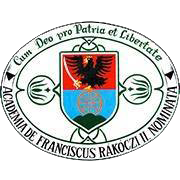Please use this identifier to cite or link to this item:
https://dspace.kmf.uz.ua/jspui/handle/123456789/98Full metadata record
| DC Field | Value | Language |
|---|---|---|
| dc.contributor.author | Huszti Ilona | hu |
| dc.contributor.author | Csernicsko Istvan | en |
| dc.contributor.author | Baran Ielyzaveta | en |
| dc.contributor.author | Густі Ілона | uk |
| dc.contributor.author | Черничко Степан | uk |
| dc.contributor.author | Барань Єлизавета | uk |
| dc.contributor.author | Csernicskó István | hu |
| dc.contributor.author | Bárány Erzsébet | hu |
| dc.date.accessioned | 2020-09-22T10:01:20Z | - |
| dc.date.available | 2020-09-22T10:01:20Z | - |
| dc.date.issued | 2019 | - |
| dc.identifier.citation | In Compare: A Journal of Comparative and International Education. 2019. Volume 49., Issue 6. pp. 1002-1009. | - |
| dc.identifier.issn | 0305-7925 (Print) | - |
| dc.identifier.issn | 1469-3623 (Online) | - |
| dc.identifier.uri | http://dspace.kmf.uz.ua:8080/jspui/handle/123456789/98 | - |
| dc.description.abstract | Abstract. Volume 43 of Compare published an article by Kulyk (2013). The author draws conclusions relating to the education systems of two minorities in Ukraine, the Crimean Tatars and the Transcarpathian Hungarians, based on semi-structured interviews and a total of 255 completed questionnaires. The study seems to suggest that the author has found the educational model that simultaneously ensures the preservation of ethno-cultural identity and facilitates social integration. The researcher concludes that by introducing bilingual education, it is possible to solve the education problems of Ukraine’s two minorities, which are significantly different from each other. Our aim is to share our thoughts related to the above-mentioned issue in this forum. Our views are rooted in our research, conducted over the last 20 years, investigating the Transcarpathian Hungarian educational system according to various criteria. We intend to draw attention to the fact that the professional discourse among politicians, educational experts and professionals at Ukraine’s Ministry of Education and Science about the educational system of minority communities, about their language policy situation and the transformation of all this is not correct and complete without involving the affected stakeholders, i.e. experts on minority education who at the same time are members of the minority in question. | en |
| dc.language.iso | en | en |
| dc.publisher | Routledge | en |
| dc.relation.ispartofseries | A Journal of Comparative and International Education;Volume 49., Number 6. | - |
| dc.rights | Attribution-NonCommercial-NoDerivs 3.0 United States | * |
| dc.rights.uri | http://creativecommons.org/licenses/by-nc-nd/3.0/us/ | * |
| dc.subject | Bilingualism | en |
| dc.subject | teaching | en |
| dc.subject | hungarians | en |
| dc.subject | Ukraine | en |
| dc.title | Bilingual education: the best solution for Hungarians in Ukraine? | en |
| dc.type | dc.type.researchArticle | en |
| Appears in Collections: | Bárány Erzsébet Csernicskó István Huszti Ilona | |
Files in This Item:
| File | Description | Size | Format | |
|---|---|---|---|---|
| Huszti_I_Csernicsko_I_Barany_E_Bilingual_education_2019.pdf | In Compare: A Journal of Comparative and International Education. 2019. Volume 49., Issue 6. pp. 1002-1009. | 540.18 kB | Adobe PDF | View/Open |
This item is licensed under a Creative Commons License





